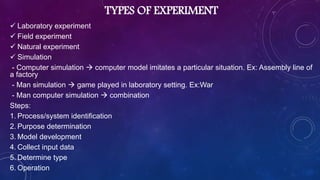This document provides an overview of research design topics including definitions, types of research design, and key concepts. It defines research design as a comprehensive plan or blueprint for conducting a research study. The main types of research design discussed are exploratory, causal, descriptive, and experimental. Exploratory research is aimed at formulating problems or hypotheses, while causal research seeks to determine cause-and-effect relationships. Descriptive research observes associations between variables, and experimental research tests hypotheses through manipulation of the independent variable. Key concepts explained include variables, hypotheses, experimental and control groups, and validity. The document also outlines the stages of developing a research design and merits of having a well-planned design.
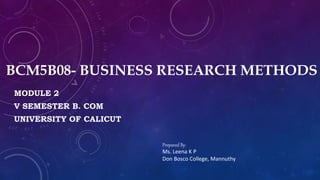
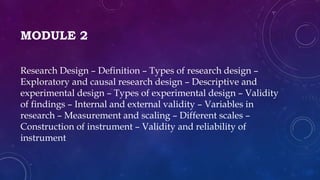



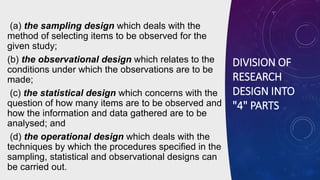
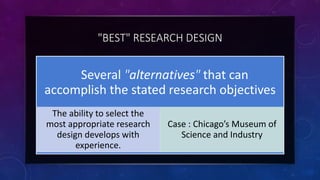


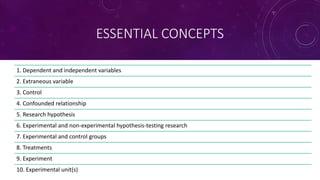
![• Dependent Variable
Depends on other factors Ex: Test score. Factors – how much you studied, sleep, hunger
• Independent Variable
It stands alone. Can’t be changed by other variables. Ex:Age[Not dependent on eating habits, exercise
etc.]
• Extraneous Variable
Could effect the dependent variable, but not explicitly included in the experiment
Ex: Activity level ------------ Weight gain
(Independent) (Dependent)
Age
(Confounding/Extraneous)
Types: Experimenter or investigator effects, Participant variables(prior knowledge , health etc.),
Situational variables(noise, temperature etc.)
• Control – Reduce the effect of extraneous variable
- should be controlled
- 1. Randomisation 2.Matching 3.Experimental design 4.Statistical control](https://image.slidesharecdn.com/1-220119135050/85/1-4-research-design-11-320.jpg)





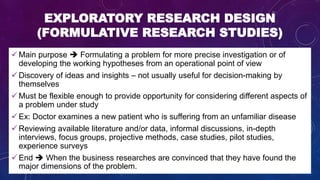






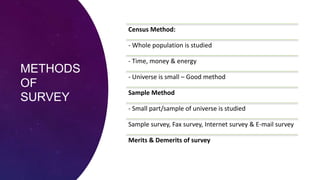
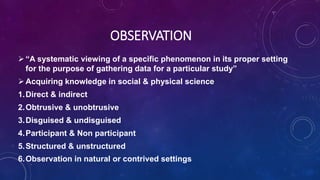

![Goals of experiment
1.Internal Validity – Manipulation of independent variable actually
caused observed effect on dependent variables [Precondition –
Control of extraneous variables]
2.External Validity – Whether cause & effect relationship found in the
experiment can be generalized
Planning to conduct experimentation:
Hypothesis, Variable determination, experimentation plan, setting-
lab/field, experiment condition- close to real life, Control extraneous
variable
Advantages & Disadvantages](https://image.slidesharecdn.com/1-220119135050/85/1-4-research-design-27-320.jpg)
